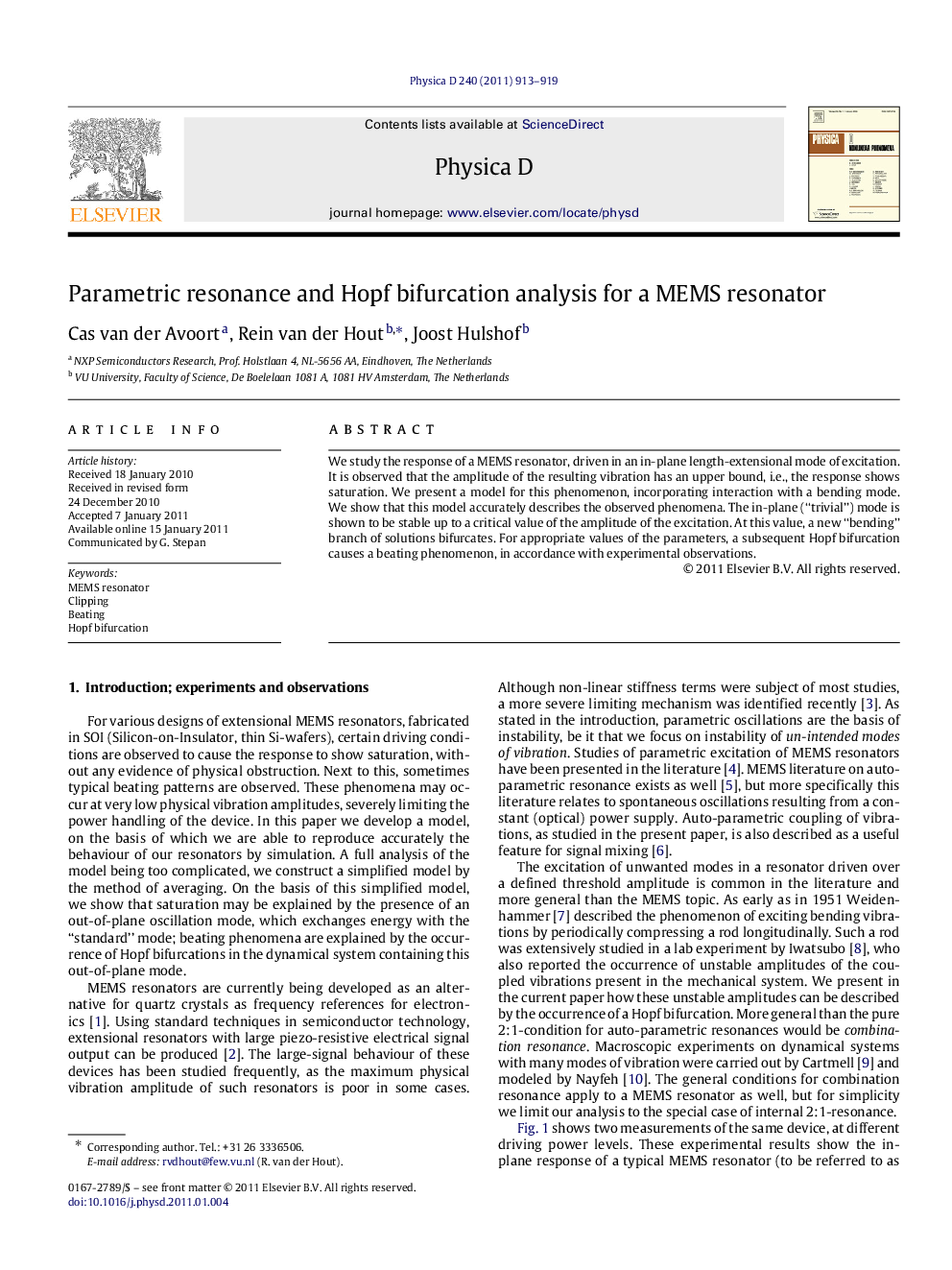| Article ID | Journal | Published Year | Pages | File Type |
|---|---|---|---|---|
| 1897217 | Physica D: Nonlinear Phenomena | 2011 | 7 Pages |
We study the response of a MEMS resonator, driven in an in-plane length-extensional mode of excitation. It is observed that the amplitude of the resulting vibration has an upper bound, i.e., the response shows saturation. We present a model for this phenomenon, incorporating interaction with a bending mode. We show that this model accurately describes the observed phenomena. The in-plane (“trivial”) mode is shown to be stable up to a critical value of the amplitude of the excitation. At this value, a new “bending” branch of solutions bifurcates. For appropriate values of the parameters, a subsequent Hopf bifurcation causes a beating phenomenon, in accordance with experimental observations.
Research highlights► We model saturation and beating phenomena in MEMS resonators. ► Saturation phenomena are shown to be due to interaction with spurious excitation modes. ► Beating phenomena are caused by Hopf bifurcations; in our case, it concerns a supercritical one, bifurcating from a spurious mode.
